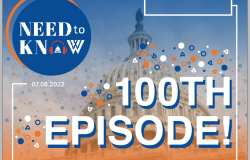Appropriations Process Wilts in the Sunshine
Hope springs eternal ... but it doesn’t summer well. The House Appropriations Committee got off to a flying start this spring, giving rise to hopes that Congress could complete action on all 12 spending bills before Oct. 1 — a feat not accomplished since 1996. But hope has a way of wilting in the scorching sunshine of a political summer.
The House Appropriations Committee reported eight of its 12 bills before June 1 and passed six of them by the July recess. For the second consecutive year, the House Republican leadership kept its commitment to restore the traditional open amendment process — something jettisoned by the previous Democratic regime in the last three years of its four-year reign. The downside to the GOP’s renewed sunshine policy on amendments, as it learned last year, is that it can be terribly time-consuming and distracting, inviting all manner of small-bite, policy-limitation amendments.
Last year, the House ground through six of the bills in 20 days, consuming 92 hours of floor time involving consideration of 306 amendments. It was the seventh bill, Interior and environment appropriations, that brought matters to a screeching halt July 28 after four days of consideration and disposal of 45 amendments. The House was only two-thirds of the way through reading the Interior bill for amendment when the leadership pulled it. That was the last it was seen alone. Nor did the House get a separate glimpse of the remaining five regular appropriations bills until they were later bundled into two mega-bills in November and December and closed to further amendments.
This year could produce a similar scenario. As of last week, the House had passed seven of the 12 bills, and the Appropriations Committee had reported four of the remaining five. While the Senate has reported all but three of its bills, it has yet to take any of them to the floor. With just this week and next left before the summer recess, it again looks like Congress will return in mid-September with none of its money bills separately enacted by the start of the fiscal year. That means one or more continuing resolutions until an appropriate omnibus can be chartered.
Last year, the excuse for setting aside the regular process was that the budget agreement, tied to the debt limit increase, contained new spending caps that were considerably higher than the House-passed budget. That excuse is still around. The House-adopted fiscal 2013 budget and its subsequent appropriations bills are considerably lower in discretionary spending than the spending ceiling in the Budget Enforcement Act, which the Senate claims is its one and only binding budget.
Moreover, as with last year, the House majority says it makes little sense to move all its bills separately when Senate Democrats aren’t moving any of theirs to the floor. Put another way, both chambers have a convenient scapegoat for not finishing their work on time: It’s the other guy’s fault. The script may be getting old, but the actors will still mumble their lines with dramatic conviction.
The Democrats were even worse at processing appropriations bills the last time they were in charge. In 2010, the House passed only two appropriations bills by the time of the elections, then failed to enact an omnibus bill after the elections. The whole mess was shoved off onto the new Republican majority in 2011 and not wrapped up until April 15 in an omnibus bill.
It was fashionable in 2010 to assert that the process was bogged down by all the earmarks that attracted dozens of Republican amendments. However, in this Congress the slowdown persists, even though earmarks have been banned. Policy provisions, placing limits on the executive, are the new bugaboo. These include scores of legislative riders that appropriators pile into their bills in violation of House rules (but that the Rules Committee protects) and limitation amendments (“None of the funds in this act may be used for purpose x”), which are allowed under the rules. Both invite pushback from Senate Democrats and veto threats by the president, further prolonging the endgame.
The seven appropriations bills passed by the House this year (including the defense bill last week) consumed 91 hours over 14 days. All told, 268 floor amendments were considered, of which 112 (42 percent) were limitation amendments (as opposed to amendments increasing, decreasing or offsetting spending).
The Majority Leader has authority under House rules to call a halt to the offering of limitation amendments at any point during their consideration by offering a motion to rise and send the bill to a final passage vote. That may be the only way to curb the seemingly endless appetite some Members have for amendments.
There comes a point at which amendatory overkill threatens to drag down the whole process and with it the country’s reliance on a predictable federal funding stream. The real test of leadership is in balancing the legitimate rights of Members to participate in the process on all money bills (not just the first several), with the larger need for rational and responsible governance.
Don Wolfensberger is a senior scholar at the Woodrow Wilson Center, a resident scholar at the Bipartisan Policy Center and former staff director of the House Rules Committee.
About the Author

Donald Wolfensberger
Former Director, the Congress Project, Wilson Center; Former Staff Director, House Rules Committee










